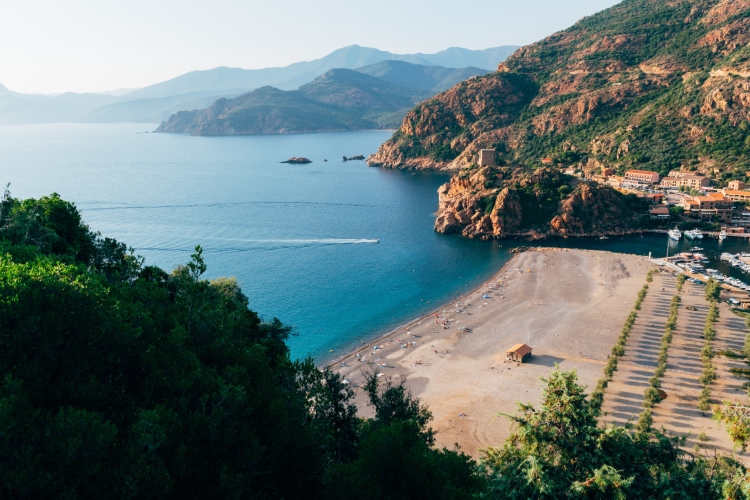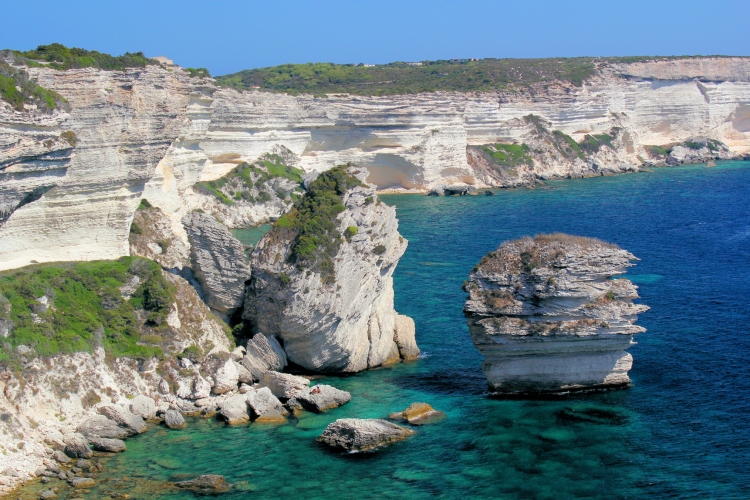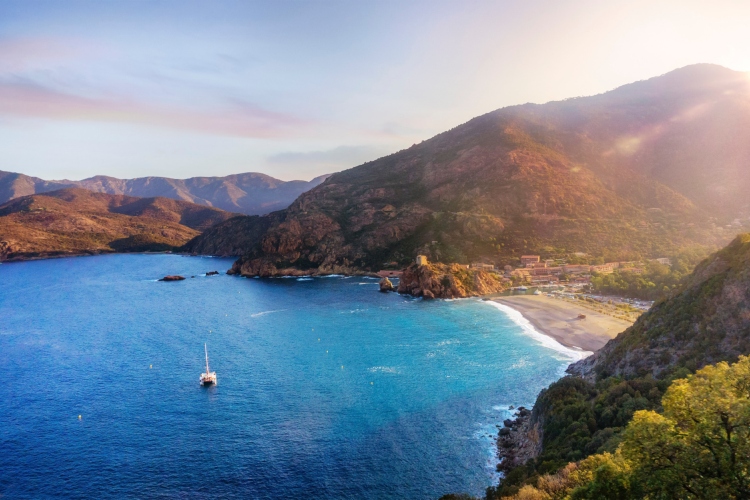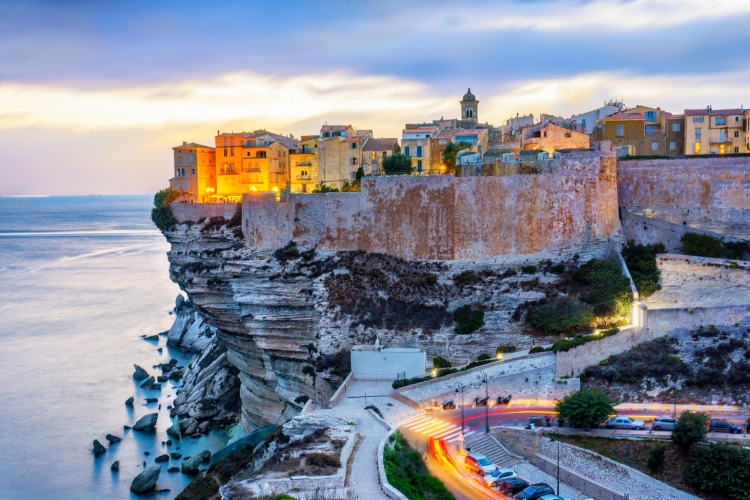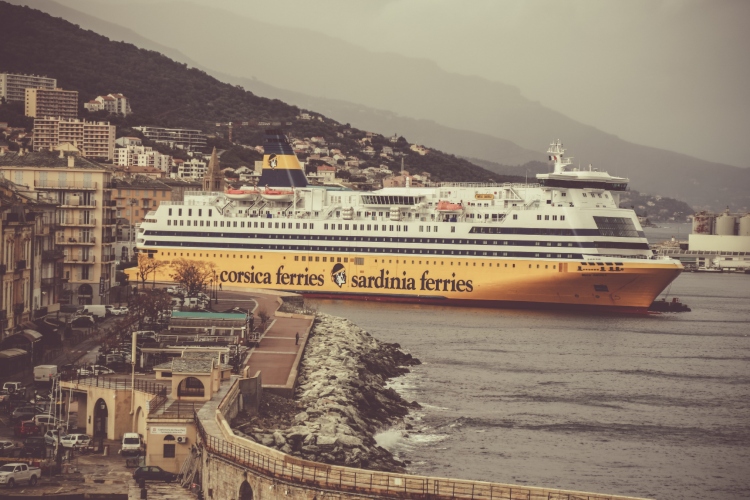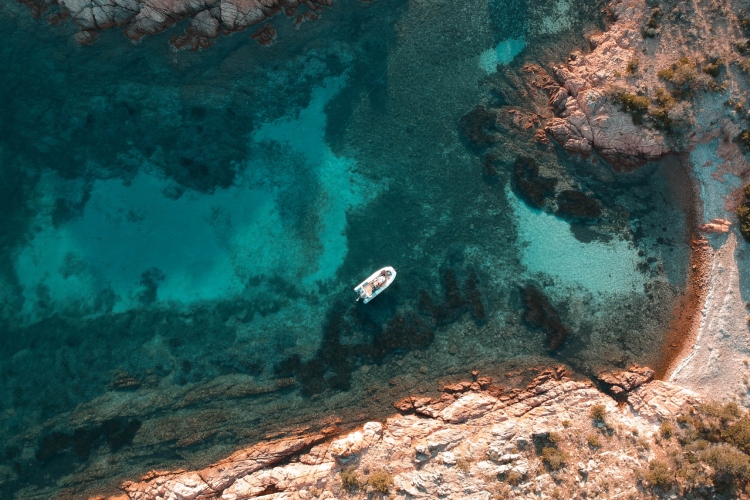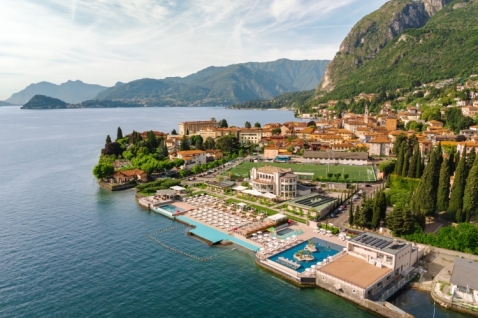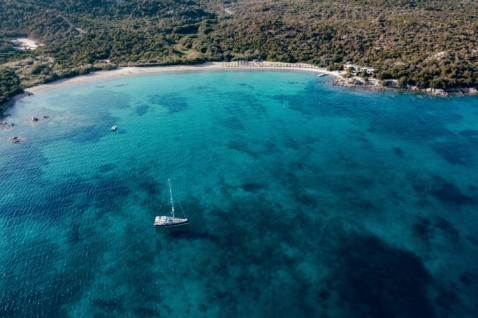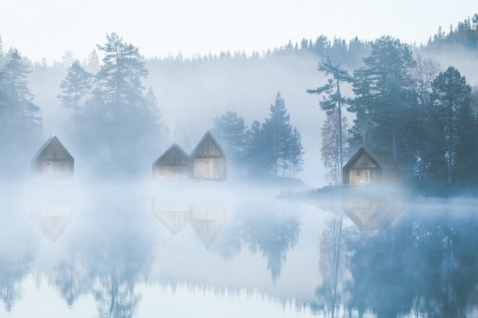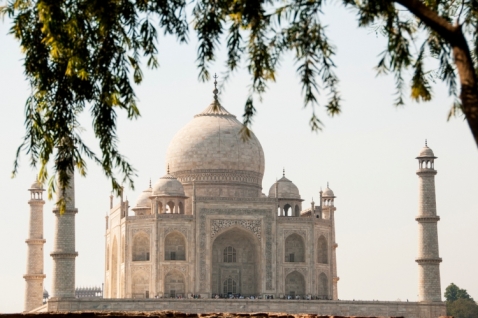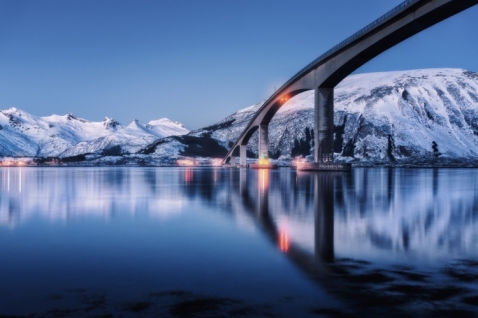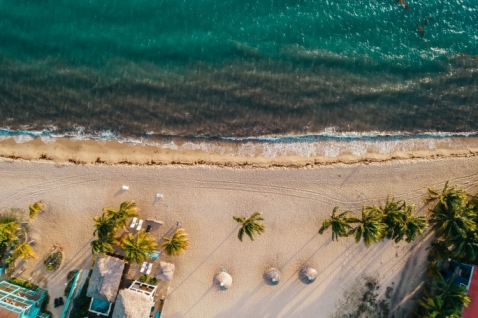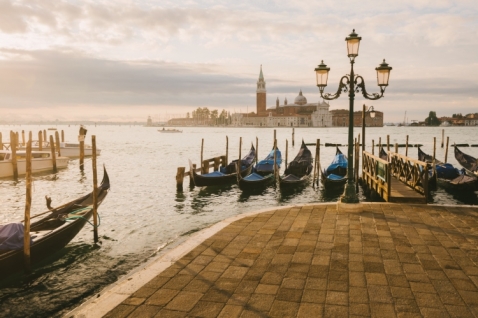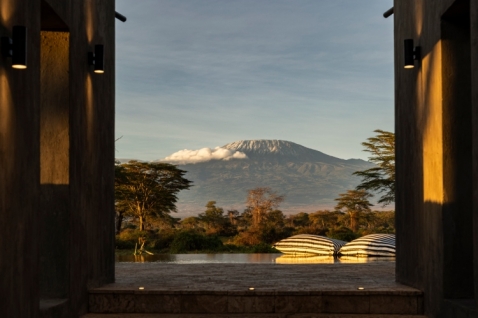More photos
A beautiful island oasis on the southeast coast of France, Corsica captivates travellers with its magical beaches, coves, idyllic snowy mountain peaks and rich culture.
The stormy past of this Mediterranean island, which was ruled by the Romans, the Italians, and then the French, has left incredibly beautiful traces, especially when it comes to architecture. Due to its strategic importance in the Mediterranean, the island of beautiful architecture has often been the target of armed conflicts between France and Italy.
One example is Girolata, a town located north-west of Porto, where you can visit a Genoese fortress that is in a picture-postcard location, as it overlooks the perfect turquoise sea and bay. The city-state of Genoa dominated Corsica for centuries, until it ceded the island to France in 1768 to pay off a debt. This unique city is available for sightseeing as it is only 22 km away from Porto, and for those who like boat rides, you can reach it from Porto or Calvi.
In the northern region of the island is the city of art and history, Bastia. Here you will find baroque chapels and churches dating back to the 15th century, along with 3 more Genoese towers from the 16th century.
Descending further towards the south of the island, you come across Bonifacio, a place that has some of the most beautiful beaches in Corsica. What makes this island magical is that the nature is almost untouched and is a perfect place for excursions, as well as for boat rides that will take you to unreal bays. The range of activities in Corsica extends from hiking and hiking tours, to nautical activities and a lot of water sports, and for those who like to enjoy a little more and to lie back, there are hotels right on the coast next to the beaches, where they can enjoy good food. and good wines.
Places you must visit:
- Bastia, Calvi, Corte, Bonifacio, Filitosa and Palaggio, Porto Vecchio and Ajaccio.
- Unique things to do in Corsica
- Admire the yachts in Saint Florent
- Visit the mill where olive oil is produced - Sainte-Lucie-de-Tallano
- Enjoy the thermal springs in Baraca
- Tour the surrounding islands of Laveci by boat
- Try the wines of the Auberge du Coucou and Calenzana wineries and you will be delighted
- Relax on the beach in Palombaggia, known for the most beautiful beaches in the region
- Visit the market in Oorticcio
Corsica – Feeling of tranquillity
Anyone coming from a modern and big city will feel in Corsica as if they have taken a step back - because here it seems as if time has stopped or everything moves at a slower pace, and around every corner there is a wonderful landscape of natural beauty. Even the air, as if perfumed with the lush blossoming of buds, mixed with fresh breezes and sea winds.
They say that anyone coming from the city only needs a day or two to blend in with this atmosphere and fit into the rhythm dictated by the island itself. It doesn't take much to get used to enjoying a meal that lasts for 3 hours, walking through the narrow unusual streets admiring the endless blue sea... Once you feel and experience all this, it's hard for you to go back to everyday life. Trains seem to move more slowly here, and drinking coffee is enjoyed for longer. Along with that slower approach to life comes the joy of enjoying your surroundings. Especially for the enjoyment of food, which is almost the central place of events in almost all social activities.
Corsicans are very serious about their cuisine and rightfully so. Most of the city's restaurants serve mostly local fresh meals, which include veal, lamb, wild boar, fish and lobster, accompanied by the well-known Italian pasta combined with wild mushrooms and of course, the long tradition of chestnuts in all forms, as well as the consumption of Corsican wine.
The dishes are generous so bring an appetite with you if you intend to visit Corsica! And yes, prepare yourself for many types of meat, especially the specialty charcuterie - a dish made from wild boar meat. Corsicans boast of producing the best charcuterie in the world, and given that they have a long history of doing so, it's no surprise that they are so overbearing when it comes to this specialty.
When the influence of Italian and French culture is so strong, you cannot help but have excellent and quality wine, so it is logical that wine is drunk in large quantities in Corsica! Corsicans serve wine with almost every meal, with an emphasis on red and rosé because they are more popular here than white wines. One of the most famous aperitifs is Corsican Muscat, which is a sweet dessert wine that is perfect to finish off a very tasty meal of local meats and cheeses.
How to get to Corsica
The best way to travel to Corsica is by plane or ferry. Most travellers to Corsica arrive by plane. There are 4 airports located in Calvi, Bastia, Ajaccio and Figari. Public transportation on the island also works well, but it may still be best to rent a car for sightseeing. Taxis are quite expensive and prices vary, so a ride from Calvi to a destination will cost you around 15 euros, while from Figari that ride costs about 35 euros. Between Calvi and Bastia there is a train called "Tinecellu." The ride is not expensive and a set of 6 tickets costs around 7.50 euros. You will see the most beautiful scenery of the surroundings from the train on the route Corto - Bocognano. On this route, you will see one of the main local attractions, the Vecchio Viaduct, constructed by the famous Gustave Eiffel, known for the construction of the Eiffel Tower in Paris and the Statue of Liberty in New York.
The roads are in good condition, but keep in mind that you will often drive through narrow streets that are set at awkward angles, so it is best to rent a smaller car. The locals are very friendly and welcoming towards tourists, so they will help you with any advice or question.
The best time of year to travel to Corsica
One of the best features and benefits of living in Corsica is the weather. Located between the Ligurian and Tyrrhenian seas, it has an ideal climate with warm winds and fresh air. Especially in the spring when the temperatures are most pleasant for most travellers, as they average around 20°C to 24°C. Expect lots of bright, vibrant colours from all kinds of flowers that abound. The scents of Corsica keep bringing people back to the embrace of this Mediterranean island.
During the summer months, the temperature rises and averages around 27 degrees (July and August). This is a great opportunity to go hiking as well, as it's cooler at higher elevations. Otherwise, it's definitely time for the beach and enjoying the seaside.
During autumn, the temperature drops to 10 degrees and the flowers change colour to rustic reds and oranges. It's still warm enough to enjoy the beach sometimes, especially in the southern regions. Another bonus for culinary lovers is the fresh mushrooms that appear during this period.
Did you know?
That the mountainous regions of Corsica are widely known for the production of goat and sheep cheese.
You must try: brocciu (a cheese similar to ricotta cheese), tomme de brebis (sheep's cheese), tomme de chevre (goat's cheese) and fromage piquant (spicy cheese with a very strong taste).
And for the end...
Probably the most famous person who is from this magical island is Napoleon Bonaparte who was born in Corsica, more precisely in the city of Ajaccio.

